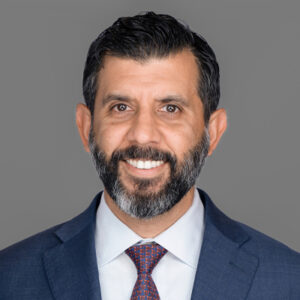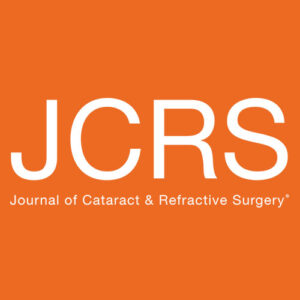Cataract
March 2021
by Liz Hillman
Editorial Co-Director
The temporary shutdown of elective surgery in the U.S. due to the COVID-19 pandemic left ophthalmology among the hardest hit specialties and created a sizable backlog of procedures, especially cataract surgery. When ophthalmologists returned to the OR, their numbers were reduced to limit patient and staff exposure to ongoing community spread of the virus.
With that, some ophthalmologists have been considering immediately sequential bilateral cataract surgery (ISBCS) with renewed interest to help get through a backlog of cases efficiently and to ease patient anxiety about coming in for surgical procedures.
Rosa Braga-Mele, MD, is one of these ophthalmologists. “I never did [ISBCS] before the pandemic. I didn’t have a reason to, unless it was someone who came from far away or if I had to put someone under [general anesthesia]. … I usually spaced my eyes a week apart, mainly for refractive reasons but also for reimbursement reasons,” Dr. Braga-Mele said.
Reducing exposure, plugging through backlogs
After the more than 3-month shutdown, Dr. Braga-Mele said she returned to the OR initially at 50% capacity, then 80%, and now is back to 100%. Since returning, she’s started looking at ISBCS as a way to keep surgical numbers up while keeping the actual number of patients coming in lower than usual, thereby helping to minimize COVID exposure risks.
Huck Holz, MD, who operates at Kaiser Permanente, which has a payment model that doesn’t financially affect the decision of same-day vs. delayed cataract surgery, said Kaiser has seen a 6.5% increase in ISBCS system wide during the pandemic. This, he said, is mostly patient driven. “Patients simply do not want to come in twice,” Dr. Holz said.
With COVID-19, many thought leaders and patients are seeing ISBCS as a way forward, Dr. Holz said, noting that ISBCS is offered at Kaiser by ophthalmologists who are comfortable performing it for patients who are good candidates.
“It cuts their exposure in half. … They have less exposure to the pharmacy. They have less exposure to the staff, to the OR, to the clinic, to even a family member who will be sitting in the car with them,” he explained.
Iqbal “Ike” Ahmed, MD, Warren Hill, MD, and Steve Arshinoff, MD, wrote an editorial in Ophthalmology calling ISBCS “the one change in practice that could have the most significant benefit in reducing infection exposure risk.”1
Dr. Holz said he thinks ISBCS could help ophthalmologists get through what he called “unprecedented backlogs.”
“These backlogs are most easily addressed with efficiency. Doing bilateral cataract cases from a healthcare perspective is advantageous because you can take one small room and it’s almost like turnover time between surgeries is half. You’re reprepping, redraping, regowning, regloving, everything is completely turned over, but your facility is much more productive and you can do more cases and can get more surgical bang for your buck and serve more people this way,” he said.
Barriers to ISBCS
In terms of barriers to adopting to ISBCS, the physicians cited safety and reimbursement as the most common impediments to adoption. Bilateral endophthalmitis and TASS are concerns with ISBCS. Dr. Braga-Mele said if one follows various safety guidelines set forth by the International Society of Bilateral Cataract Surgeons (iSBCS), she doesn’t think ISBCS has any further risk than delayed sequential bilateral cataract surgery.
The iSBCS, which as of January 2020 moved its documents to the Eye Foundation of Canada, put forth principles in 2009 for safe ISBCS. They include informed consent and patient choice, aseptic separation of the two procedures (different instruments, lot numbers for drugs and supplies, intracameral antibiotics, etc.), actions to avoid IOL power errors, deferring the second eye if any problem occurs with the first that cannot be immediately resolved, and more.2
Dr. Braga-Mele said she follows the principles set forth by the iSBCS and uses intracameral moxifloxacin in a dilution protocol provided to her by Dr. Arshinoff. David F. Chang, MD, also said he uses intracameral moxifloxacin (on all of his cases, not just ISBCS) and won’t go forward with the second eye if the first eye had a complication. Dr. Holz said he avoids ISBCS in eyes with comorbidities like moderate to advanced glaucoma, high hyperopia and high myopia, advanced diabetic retinopathy, and those who could be prone to higher infection rates.
Another concern of ophthalmologists with ISBCS is not being able to adjust the second eye in response to the first eye’s outcome. Dr. Braga-Mele expressed this as a reason why she didn’t do ISBCS pre-pandemic. Since starting it, however, she said she’s actually found ISBCS patients complain less of dysphotopsia.
“It’s like when both eyes are done, they don’t notice it as much, whereas when you do one unilateral there’s more of a comparison effect,” she said.
Dr. Chang acknowledged the benefit delaying the second eye for cataract surgery can have for patients seeking spectacle independence with a presbyopia-correcting IOL. Both the patient and surgeon learn from the first eye outcome, and this might result in selecting a different refractive target or even a different diffractive IOL for the second eye, “mix and match.” However, he said the Light Adjustable Lens (LAL, RxSight) takes the need to “learn” from the first eye out of the equation.
“I routinely offer ISBCS to patients needing bilateral LALs, and 95% of these patients elect this option. These patients nearly all get some amount of myopia in the second eye ranging from –0.5 to –2 D, and the LAL allows them to experience and change the amount of intentional anisometropia before setting it permanently,” Dr. Chang said. “During the past year, my partner and I have done more than 110 patients with bilateral LALs and ISBCS.”
A couple of recent reviews of the pros and cons of ISBCS vs. delayed sequential bilateral cataract surgery (DSBCS) have found that the concerns regarding bilateral complications and poorer refractive outcomes with ISBCS are not supported by the literature.3 A retrospective comparative study of 13,711 DSBCS and 3,561 ISBCS cases from Kaiser Permanente Northern California found no evidence to suggest ISBCS resulted in poorer refractive outcomes.4 This study also noted that in 10,494 ISBCS eyes, there was one case of postop endophthalmitis and two cases in 38,736 DSBCS eyes.
Dr. Braga-Mele said she thinks the application of ISBCS will remain limited in countries where reimbursement for the second eye in ISBCS is reduced compared to single-eye surgeries. “Even in my hands, if I’m doing 20–25 cases in an OR day, I’ll only do three or four bilateral, maximum, because of the reimbursement issue. If reimbursement was full, I’d probably do at least 50% or more bilateral, as long as patients were consented properly and fit the criteria,” she said.
Dr. Braga-Mele explained that the procedure is just as difficult for the second eye and it requires the same amount of expertise and knowledge. While more efficient in some respects, coupling the procedures doesn’t save a ton of surgical time.
“The risk is the same to both me and the patient as the first eye and the amount of expertise needed is the same. I think it should be reimbursed the same,” she said.
Dr. Chang weighed in on reimbursement as well, saying that the 50% reduction in reimbursement for the second eye in the U.S. is a “strong disincentive to performing ISBCS.”
“This much of a reduction might be justified when performing bilateral vs. unilateral ptosis repair, but with cataract surgery, the ASC must treat each eye as a separate procedure from the standpoint of sterile protocols,” he said.
The future of ISBCS
“I think this will be standard of care sometime within the next 10 years. I think as soon as insurance reimbursements change, people will at least offer it to their patients,” Dr. Holz said.
If ISBCS were to become fully reimbursed, Dr. Braga-Mele said it would be a benefit to have an FDA-approved antibiotic. “If we’re following guidelines, we need to have intracameral moxi or intracameral cefuroxime. We need to have something for guidelines set out in the U.S. that is FDA approved for there to be easier access for doctors to use,” she said.
Dr. Holz said COVID-19 has permanently changed the way we look at the world and will change how people view infectious disease. Whether ISBCS will become more accepted or if reimbursement will change as a result of the pandemic, he’s not so sure.
About the physicians
Rosa Braga-Mele, MD
Professor of Ophthalmology
University of Toronto
Toronto, Canada
David F. Chang, MD
Clinical Professor
University of California, San Francisco
San Francisco, California
Huck Holz, MD
Kaiser Permanente
Santa Clara, California
References
- Ahmed I, et al. Bilateral same-day cataract surgery: An idea whose time has come #COVID-19. Ophthalmology. 2021;128:13–14.
- iSBCS General Principles Committee 2008–9. iSBCS General Principles for Excellence in ISBCS 2009. itgo.ca/eyefoundationcanada/wp-content/uploads/sites/5/2020/05/2010-09-01-FINAL-ISBCS-SBCS-suggestions-from-ESCRS-Barcelona.pdf. Accessed Nov. 23, 2020.
- DelMonte DW. Pros and cons of bilateral immediately sequential cataract surgery. Curr Ophthalmol Rep. 2020;8:88–92.
- Herrinton LJ, et al. Immediate sequential vs. delayed sequential bilateral cataract surgery: retrospective comparison of postoperative visual outcomes. Ophthalmology. 2017;124:1126–1135.
Relevant disclosures
Braga-Mele: None
Chang: None
Holz: None
Contact
Braga-Mele: rbragamele@rogers.com
Chang: dceye@earthlink.net
Holz: drhuckholz@gmail.com



